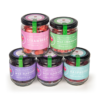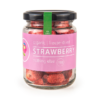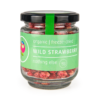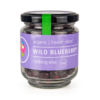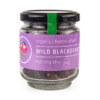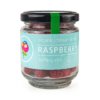The Fascinating History of Homemade Jams and Why Berry Jams Are a Prized Find
Preserving fruits for later consumption is as old as human civilization. Early city dwellers had interest in prolonging the life of fruits for commercial reasons. The Fertile Crescent in the Middle East owes its epitet ‘cradle of civilization’ because people there were the first agriculturalists who perfected the art of growing, storing and preserving various types of food, including fruits.
Apricots, dates, figs and plums were all stored and traded as valuable exotic foods to places that didn’t have them year-round. The most obvious way of getting the job done was to expose the fruits to the elements – the sun dehydrated them and the wind kept away the insects, but that required patience and a lot of experimenting in order to keep the stuff from spoiling.
The sun-drying method could barely work for berries, however. These gems of nature were considered prized treats for the palate for thousands of years, and traders naturally wanted to ship them out to faraway places. Leaving berries to dry in the sun was never an option. The fruits lose their essence and are reduced to specks of purple and red. Anyone who has tried it knows.
The modern concept of a homemade jams may have been invented back in those times because some ancient civilizations (India and Mesopotamia) knew how to produce sugar from cane. Most of the ancient kingdoms also had molasses and honey, so it makes sense from this point in time that artful homekeepers learned that they could preserve fruits in clay pots by covering them with either of these glucose-containing products.
The invention of glass containers enabled a hip new way of storing jams. This may have been the first prototype of sterilizing jars with fire. Fast-forward many centuries to the modern era and we have a continuation of this very long tradition of preserving healthy fruits and berries for the cold season. Europe, and especially Eastern Europe and the Balkans, arguably hold the trophy for nurturing the tradition of making jams and compote.
Outside the world of mass-market jams and candied fruits, individuals and families prepare their favorite fruits by using a variety of methods to preserve them. Some people boil the fruit of their choosing with sugar, until the mass has become a nearly-dehydrated mush. Then the product is stored in glass jars that are heated in the oven and put away for later use.
Others place fruits in jars, fill them with water and sugar, and then heat them in the oven to kill any remaining germs inside the glass. Another method uses little to no sugar to store whole fruits with the help of burnt lime. Jars containing this sort of jams and fruits can enjoy a shelf life of more than 15 years.
Few things that foodies need to keep in mind is that with jams there is a trade-off between taste and the nutritional value of the fruits that are preserved. Mass-market jams contain additives, such as gelatin, besides having unsavory amounts of sugar. On the other hand, home-made jams and those made by limited-quantity producers offer great taste, better nutritive specs, but have a shorter shelf-life.
berries!!!
When it comes to jams made of berries, the berry-professionals over on this side will tell you that wild-picked berries are very hard to find in jam or marmalade form. The reason being, they are very rare to begin with, difficult to harvest, and it takes a significant quantity of any given berry to fill up a jar. Hence, if you do find them, the price will match the esoteric beauty of the berry.
In our experience three of the most delicious and savoury jams ever made are those of raspberries, blackberries and strawberries.
The first offer a sour-ish taste and creamy texture, given by the raspberry’s ability to decompose from its form at not such awfully high temperatures. The blackberry is a slightly different beast. Wild-picked, they are smaller, stiffer and contain more a little bit more natural sugars compared to raspberries. Blackberry jams are not so fit for spreading on a slice of bread, but they go great off the spoon.
Last but not least, the queen of all berries (it’s an ongoing discussion), the strawberry! Strawberries make a perfect jam. These goodies can be easily cooked and release their natural sugars like a charm, resulting in the thickening of the jam with the slurpy matter that we all love spreading on bread.
If you can get your hands a home-made berry jam, go for it and if this isn’t happening any time soon, you are always welcome to enjoy the deep-frozen, wild picked and delicious berries from A Kissing Tree.


